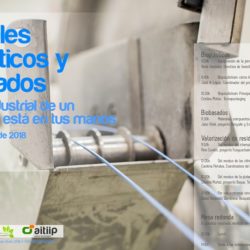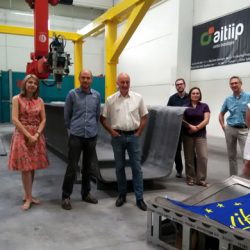MAIN FEATURES
Premium Quality
Green composites will be as strength as other composites. Rheology and ISO tests will be carried out and demonstrators will be validated in transportation and construction real cases.
R – R – R
Green composite will be recyclable by different methods (hot pressing, grinding and dissolution). The recycled granules will be used again to produce new articles. Repairing ready.
Biobased Natural
Natural fibres from flax waste will be the base of the matrix. The resin used as the matrix for the different layers will be based on the waste of biopolymers production which is also biobased.
- THESE ARE PROJECT RESULTS -
Within the Recysite project it has been demonstrated the production possibility of green composites based on natural fibres sources from agro-wastes, bio-based resin (ELO-epoxidized linseed oil) and humins (a side stream of bio-polymers production). Additionally, it is possible to recycle these composites up to 10 times.

Several real demonstrators were manufactured and validated for the transportation and construction sector. However, high mechanical requirements and fire protection legislation have to be fulfilled in some end applications, for these reasons, the amount of bio-based content varied from 7,5% for railway wagon floor up to 90% for the modular panels and ventilated facades in the construction sector.

This project provides the solutions for the composite industry where bio-based and renewable materials can be introduced in different percentage according to sector requirements, without compromising the quality and also lowering the prices.

Composites
A composite material comprises two or more components; its main characteristic being the superior properties the end material has, as opposed to those of each individual constituent on their own. In this context, our composites consist of a homogeneous matrix (thermoset polymer) that is reinforced by a stronger and stiffer constituent (textile structure).|Green Composites are novel solutions designed to boost sustainability and circular economy in the plastic sector by combining biobased materials and recycling functionalities.
THE INGREDIENTS
Natural fibers
The reinforced structure of the composite will be non-wovens or needlefelts textiles made up linseed flax from linseed straw (agricultural waste). It will be extracted and optimised for its industrialisation by Centexbel and La Zeloise.
Bioresin
The matrix biobased resin will be provided by Avantium and CNRS. It will be extracted from processing two residues: linseed oil and humins.
Handbook of green composites
Adaptation and optimisation of processing technologies to widely spread Recyclable and Reusable Biocomposites. Protocols will be defined and validated by Cidetec and Aitiip.










